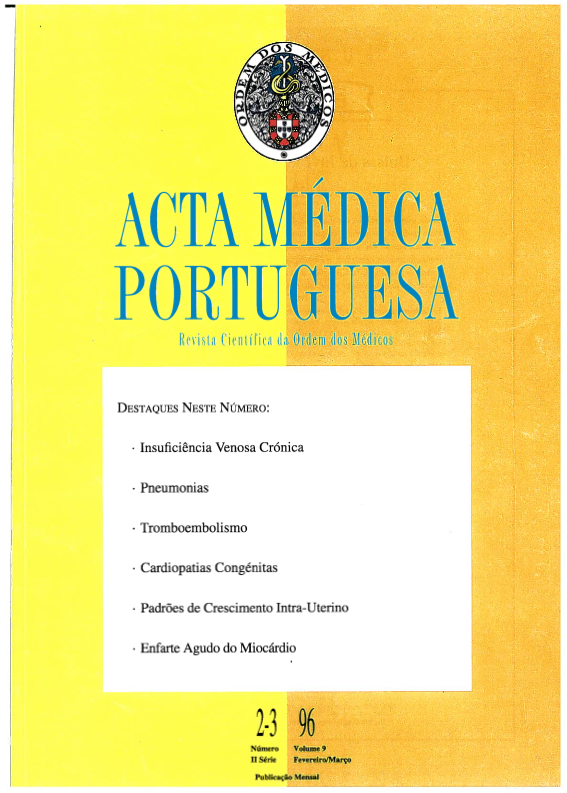Prenatal diagnosis of congenital cardiomyopathies. Current reality in the south of the country.
DOI:
https://doi.org/10.20344/amp.2555Abstract
In order to make an actual perspective about prenatal diagnosis of congenital heart disease in the area of influence of our department, a prospective study including 948 fetus and 185 newborn was done, 348 fetus and 20 newborn evaluated during 1993 (group I) and the remaining during 1994 (group II). In both groups indications for fetal echocardiography were mainly maternal (18%) and familiar (14%) factors, but occurrence of CHD were respectively 2% and 0% for them. Fetal factors for echocardiography account for 7%, namely arrhythmias (7%) and obstetric suspicion of CHD (6%), but occurrence of CHD was respectively 13% and 32% for group I and 36% and 48% for group II. In the newborn with serious CHD, risk factors could be identified in 30% in group I and 36% in group II, being respectively 15% and 7% referred for fetal echocardiography. It is concluded that although a rise in the number of fetus evaluated and a better obstetric accuracy have occurred, the rate of prenatal diagnosis of CHD is still very low, pointing to necessity of continuing our actual policy of teaching and spreading this area, specially in the primary health care units.Downloads
Downloads
How to Cite
Issue
Section
License
All the articles published in the AMP are open access and comply with the requirements of funding agencies or academic institutions. The AMP is governed by the terms of the Creative Commons ‘Attribution – Non-Commercial Use - (CC-BY-NC)’ license, regarding the use by third parties.
It is the author’s responsibility to obtain approval for the reproduction of figures, tables, etc. from other publications.
Upon acceptance of an article for publication, the authors will be asked to complete the ICMJE “Copyright Liability and Copyright Sharing Statement “(http://www.actamedicaportuguesa.com/info/AMP-NormasPublicacao.pdf) and the “Declaration of Potential Conflicts of Interest” (http:// www.icmje.org/conflicts-of-interest). An e-mail will be sent to the corresponding author to acknowledge receipt of the manuscript.
After publication, the authors are authorised to make their articles available in repositories of their institutions of origin, as long as they always mention where they were published and according to the Creative Commons license.









